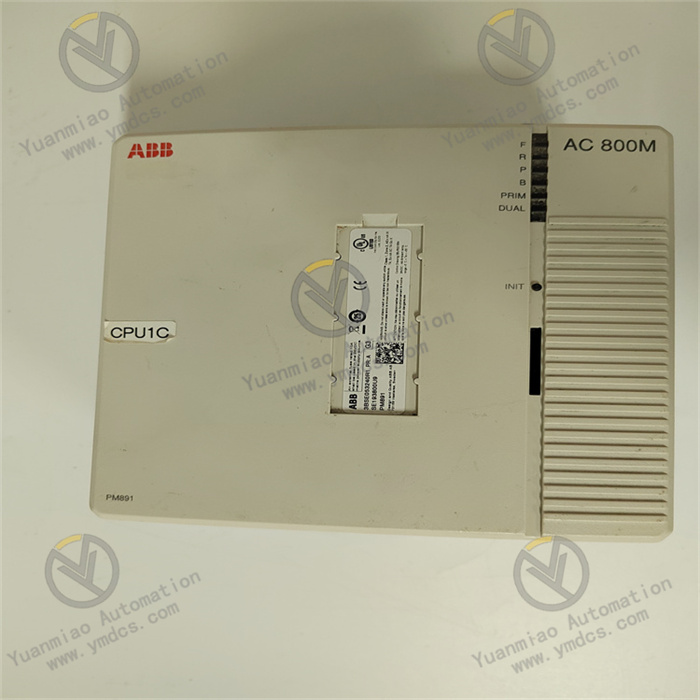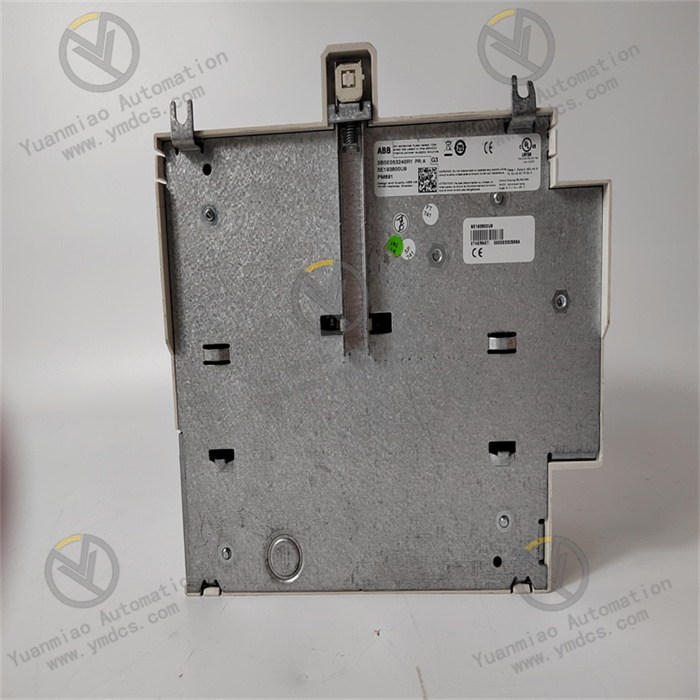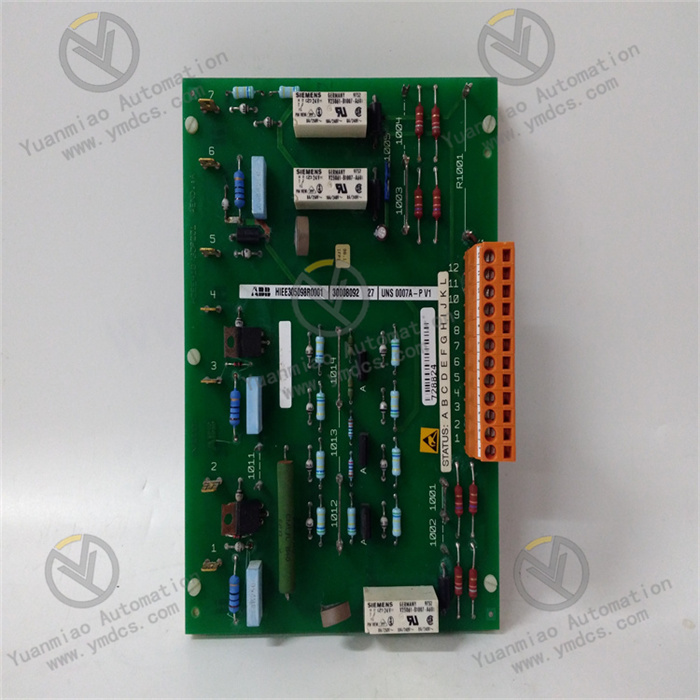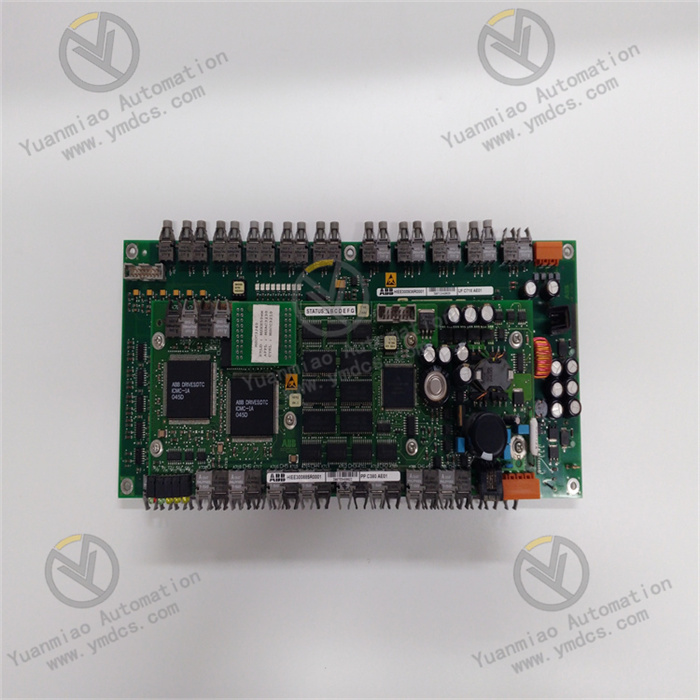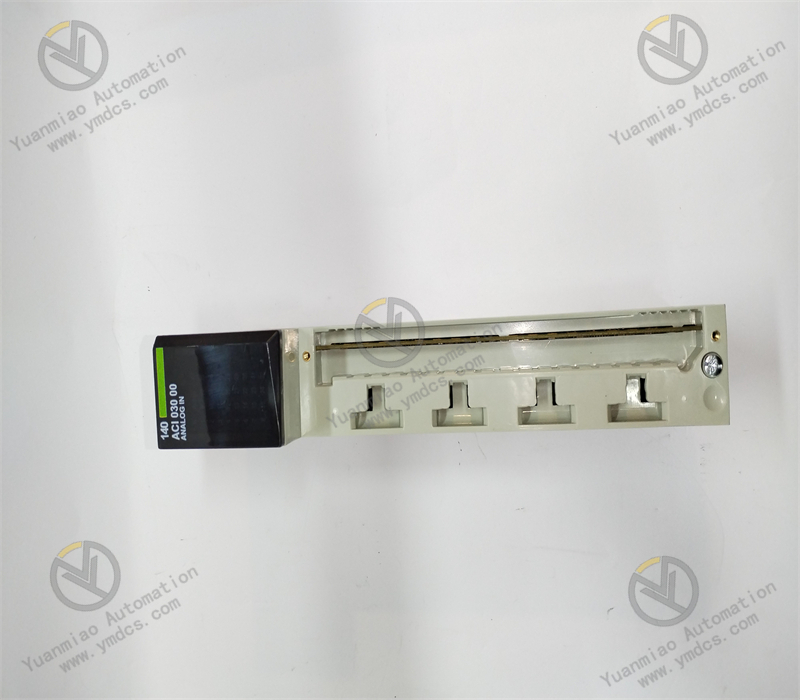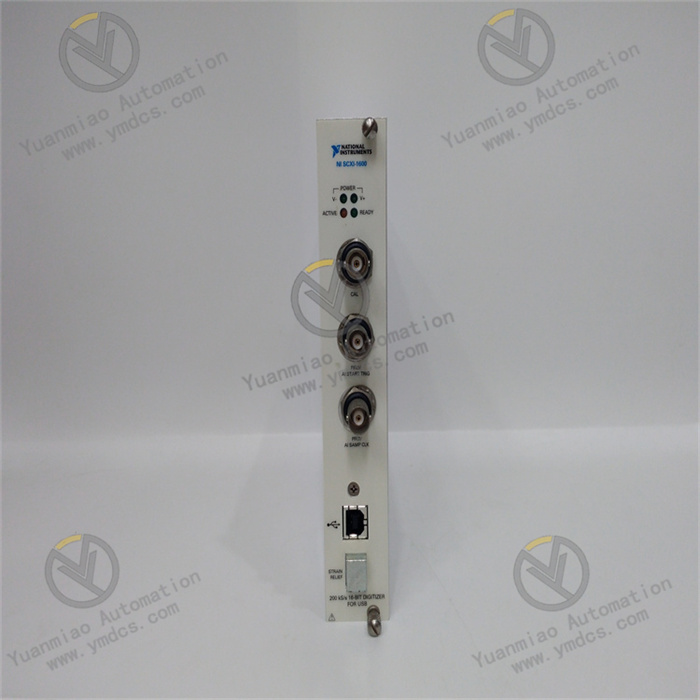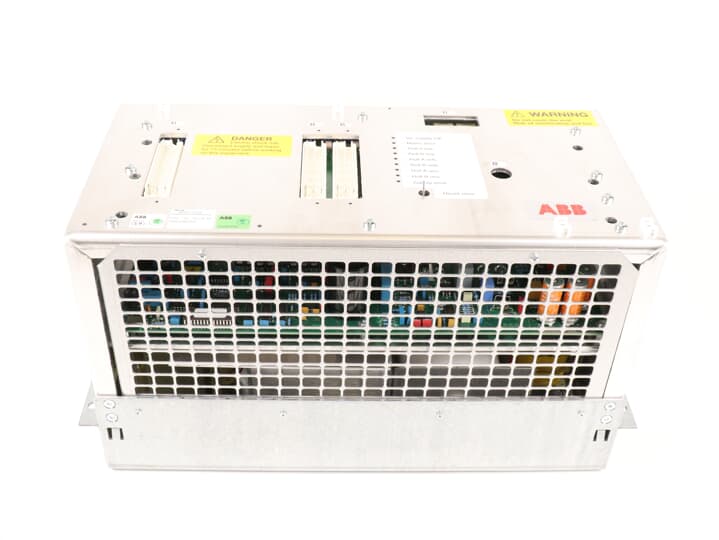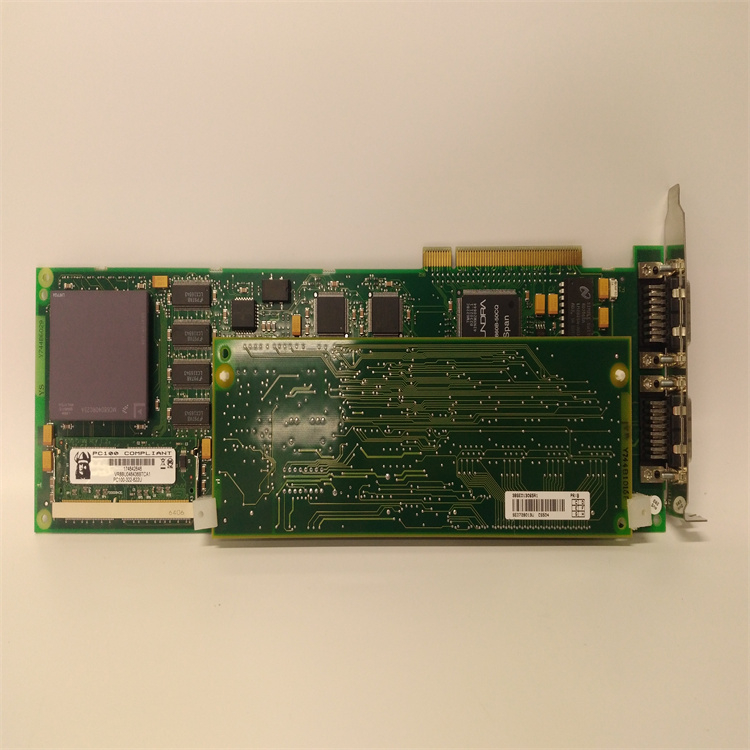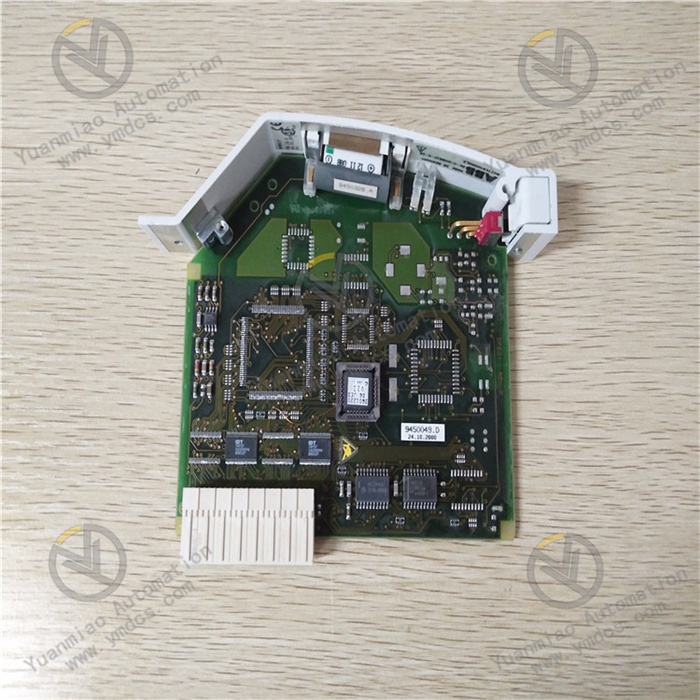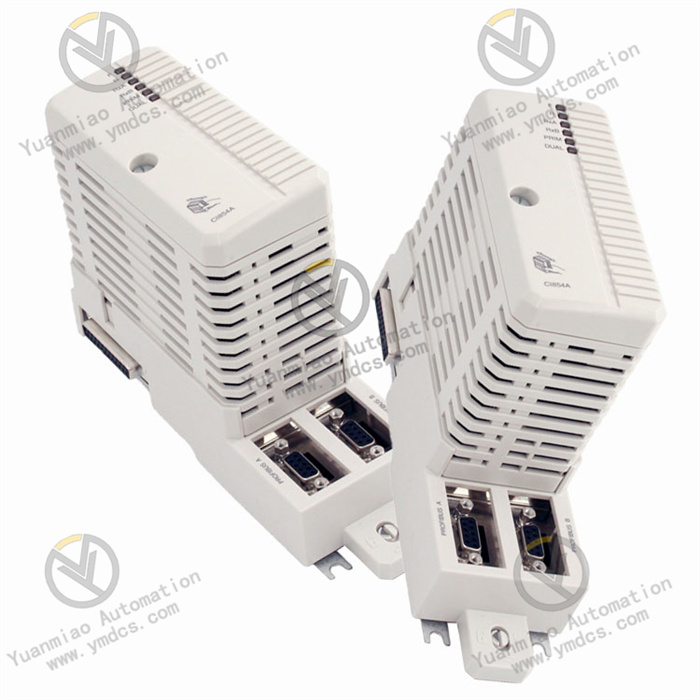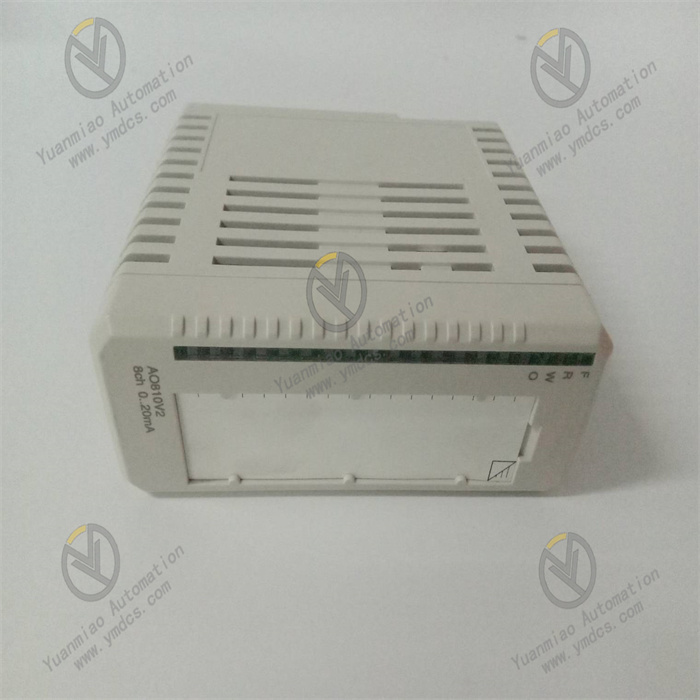Description
Basic Functions
High-performance Processing: Equipped with a 450MHz MPC8270 or Freescale PowerQUICC III MPC8641 processor, it can rapidly process large volumes of data to meet the requirements of complex industrial control applications.
Redundancy Design: Supports CPU redundancy (including CPU, CEX-Bus, communication interfaces, and S800 I/O). Typically, two PM891 controllers operate as a redundant pair, with one active and one standby, ensuring high system availability and reliability in the event of hardware failures.
Real-time Clock: Built-in real-time clock provides an accurate time reference for the system, facilitating event logging and timing control.
Data Storage: Features 256MB RAM, of which 208.985MB is available for application programs, along with flash memory for storing programs and data. It also includes a secure digital interface for convenient data storage and transmission.
Communication Functions:
Redundancy Design: Supports CPU redundancy (including CPU, CEX-Bus, communication interfaces, and S800 I/O). Typically, two PM891 controllers operate as a redundant pair, with one active and one standby, ensuring high system availability and reliability in the event of hardware failures.
Real-time Clock: Built-in real-time clock provides an accurate time reference for the system, facilitating event logging and timing control.
Data Storage: Features 256MB RAM, of which 208.985MB is available for application programs, along with flash memory for storing programs and data. It also includes a secure digital interface for convenient data storage and transmission.
Communication Functions:
- Two RJ45 Ethernet ports (CN1, CN2) for connecting to control networks, supporting multiple communication protocols such as Ethernet, Profibus, and Modbus, enabling communication with various I/O modules and other devices;
- One isolated RJ45 serial port (COM4) for connecting configuration tools.
Status Monitoring: Includes LED indicators to visually display the system's operating status, such as power status, communication status, and processor status, enabling quick fault diagnosis.
Modular Expansion: - The Communication Extension Bus (CEX-Bus) can expand onboard communication ports through communication interface units and support redundant communication interfaces;
- The optical module bus can connect seven S800 I/O unit clusters, with up to 12 units per cluster, facilitating system expansion.

Technical Parameters
Processor: 450MHz main frequency.
Memory: 256MB RAM, 512MB flash memory.
Performance: Completes 1,000 Boolean operations in only 0.043 milliseconds.
Power Supply: Operating voltage is typically DC 24V, with an allowable voltage range of 19.2–30V DC and a maximum ripple of 5%. Specific power consumption is not explicitly stated.
Communication Interfaces: Two 10/100Mbit/s Ethernet ports, two RS-232/485 serial ports.
Dimensions: 280mm depth, 105mm height, 245mm width.
Weight: 2.1kg.
Protection Rating: IP20, preventing dust and solid objects from entering.
Memory: 256MB RAM, 512MB flash memory.
Performance: Completes 1,000 Boolean operations in only 0.043 milliseconds.
Power Supply: Operating voltage is typically DC 24V, with an allowable voltage range of 19.2–30V DC and a maximum ripple of 5%. Specific power consumption is not explicitly stated.
Communication Interfaces: Two 10/100Mbit/s Ethernet ports, two RS-232/485 serial ports.
Dimensions: 280mm depth, 105mm height, 245mm width.
Weight: 2.1kg.
Protection Rating: IP20, preventing dust and solid objects from entering.
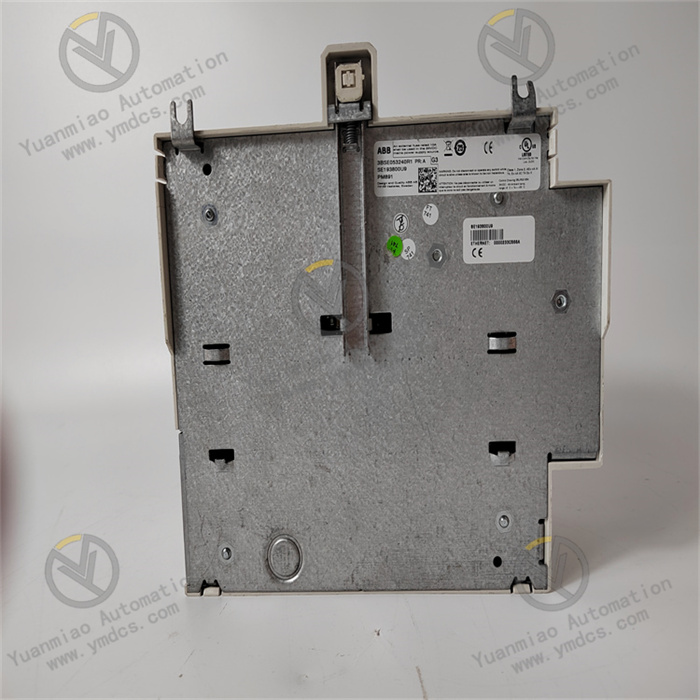
Common Faults and Solutions
1. Power Supply Fault
Fault Symptom: Power indicator off, module unresponsive.
Possible Causes: External power supply not connected or voltage abnormal; loose power terminals; internal power circuit failure of the module.
Solutions: Check if the external power supply is normal and measure the voltage with a multimeter within the specified range; re-plug the power terminals to ensure a secure connection; contact professional maintenance personnel for internal power circuit faults.
Possible Causes: External power supply not connected or voltage abnormal; loose power terminals; internal power circuit failure of the module.
Solutions: Check if the external power supply is normal and measure the voltage with a multimeter within the specified range; re-plug the power terminals to ensure a secure connection; contact professional maintenance personnel for internal power circuit faults.
2. Communication Fault
Fault Symptom: Failure to establish communication with other devices, or data loss/errors during communication.
Possible Causes: Incorrect communication parameter settings; damaged communication cables or loose interfaces; high network load or electromagnetic interference; hardware failure of the module's communication interface.
Solutions: Verify that communication parameters match those of other devices; inspect and replace damaged communication cables/interfaces; optimize network configuration to reduce interference; replace the module or seek professional repair for hardware communication interface faults.
Possible Causes: Incorrect communication parameter settings; damaged communication cables or loose interfaces; high network load or electromagnetic interference; hardware failure of the module's communication interface.
Solutions: Verify that communication parameters match those of other devices; inspect and replace damaged communication cables/interfaces; optimize network configuration to reduce interference; replace the module or seek professional repair for hardware communication interface faults.
3. Processor Fault
Fault Symptom: Slow system operation, crashes, or abnormal program execution.
Possible Causes: Processor overheating; memory faults; program errors or incompatible firmware versions.
Solutions: Check the module's heat dissipation and ensure installation in a well-ventilated environment; try restarting the module, and if the issue persists, consider updating firmware or restoring factory settings; use programming tools to check program logic and fix errors.
Possible Causes: Processor overheating; memory faults; program errors or incompatible firmware versions.
Solutions: Check the module's heat dissipation and ensure installation in a well-ventilated environment; try restarting the module, and if the issue persists, consider updating firmware or restoring factory settings; use programming tools to check program logic and fix errors.
4. Flash Card Fault
Fault Symptom: Inability to read/write flash card or data storage errors.
Possible Causes: Damaged flash card; loose flash card interface; file system errors.
Solutions: Replace the flash card; check the flash card interface to ensure secure insertion; check the file system in the system and attempt to repair or format the flash card (note: back up data first).
Possible Causes: Damaged flash card; loose flash card interface; file system errors.
Solutions: Replace the flash card; check the flash card interface to ensure secure insertion; check the file system in the system and attempt to repair or format the flash card (note: back up data first).

Installation and Configuration Methods
Installation Steps
Preparation: Ensure the installation environment meets requirements, such as ambient temperature generally between -10°C and 55°C, no strong electromagnetic interference, etc. Prepare necessary tools, such as a screwdriver.
DIN Rail Mounting: Align the PM891K01 processor unit with the standard DIN rail, start from the top of the rail, and use its sliding and locking mechanism to slide the module downward along the rail until the bottom of the module snaps into the rail and locks in place. Ensure the module is installed in a well-ventilated location with sufficient space around it for heat dissipation and subsequent maintenance.
Power Connection: Connect a DC 24V power supply (voltage range 19.2–30V DC) to the processor unit's power terminals as required, ensuring a secure connection to avoid loose contact.
Communication Cable Connection: If communicating with other devices (e.g., host computers, PLCs, or other controllers), connect appropriate communication cables to the PM891K01's Ethernet ports (CN1, CN2) or serial port (COM4) based on the communication protocol and interface type. For example, insert an RJ45 network cable into the corresponding Ethernet port for Ethernet communication, or connect a serial cable to the COM4 port for RS-232 communication.
Connection to Other Modules (if applicable): If the system includes other expansion modules (e.g., I/O modules, communication modules), connect them to the PM891K01 processor unit via the backplane bus or corresponding interfaces, ensuring correct and secure connections.
DIN Rail Mounting: Align the PM891K01 processor unit with the standard DIN rail, start from the top of the rail, and use its sliding and locking mechanism to slide the module downward along the rail until the bottom of the module snaps into the rail and locks in place. Ensure the module is installed in a well-ventilated location with sufficient space around it for heat dissipation and subsequent maintenance.
Power Connection: Connect a DC 24V power supply (voltage range 19.2–30V DC) to the processor unit's power terminals as required, ensuring a secure connection to avoid loose contact.
Communication Cable Connection: If communicating with other devices (e.g., host computers, PLCs, or other controllers), connect appropriate communication cables to the PM891K01's Ethernet ports (CN1, CN2) or serial port (COM4) based on the communication protocol and interface type. For example, insert an RJ45 network cable into the corresponding Ethernet port for Ethernet communication, or connect a serial cable to the COM4 port for RS-232 communication.
Connection to Other Modules (if applicable): If the system includes other expansion modules (e.g., I/O modules, communication modules), connect them to the PM891K01 processor unit via the backplane bus or corresponding interfaces, ensuring correct and secure connections.
Configuration Steps
Software Preparation: Install configuration software compatible with the PM891K01, such as ABB AC 800M Engineering Studio.
Establish Connection: Connect the configuration computer to the PM891K01 processor unit via appropriate communication cables (e.g., Ethernet or serial), open the configuration software, and set correct communication parameters (e.g., IP address, port number, communication protocol) to establish a connection with the processor unit.
Hardware Configuration: In the configuration software, perform hardware configuration for the PM891K01 processor unit and connected modules based on actual hardware connections, including setting module types, addresses, parameters, etc. For example, configure channel attributes of I/O modules and communication parameters of communication modules.
Program Download: Download prepared control programs or configuration files to the PM891K01 processor unit's flash memory via the configuration software. Ensure programs are compiled without errors before downloading, and maintain stable communication during the download to avoid interruptions.
System Debugging: After downloading, debug the entire system to check if modules work normally, communication is stable, and control logic is correct. Monitor the module's operating status, input/output signal values, and program execution via monitoring software, and troubleshoot and modify issues promptly.
Establish Connection: Connect the configuration computer to the PM891K01 processor unit via appropriate communication cables (e.g., Ethernet or serial), open the configuration software, and set correct communication parameters (e.g., IP address, port number, communication protocol) to establish a connection with the processor unit.
Hardware Configuration: In the configuration software, perform hardware configuration for the PM891K01 processor unit and connected modules based on actual hardware connections, including setting module types, addresses, parameters, etc. For example, configure channel attributes of I/O modules and communication parameters of communication modules.
Program Download: Download prepared control programs or configuration files to the PM891K01 processor unit's flash memory via the configuration software. Ensure programs are compiled without errors before downloading, and maintain stable communication during the download to avoid interruptions.
System Debugging: After downloading, debug the entire system to check if modules work normally, communication is stable, and control logic is correct. Monitor the module's operating status, input/output signal values, and program execution via monitoring software, and troubleshoot and modify issues promptly.


